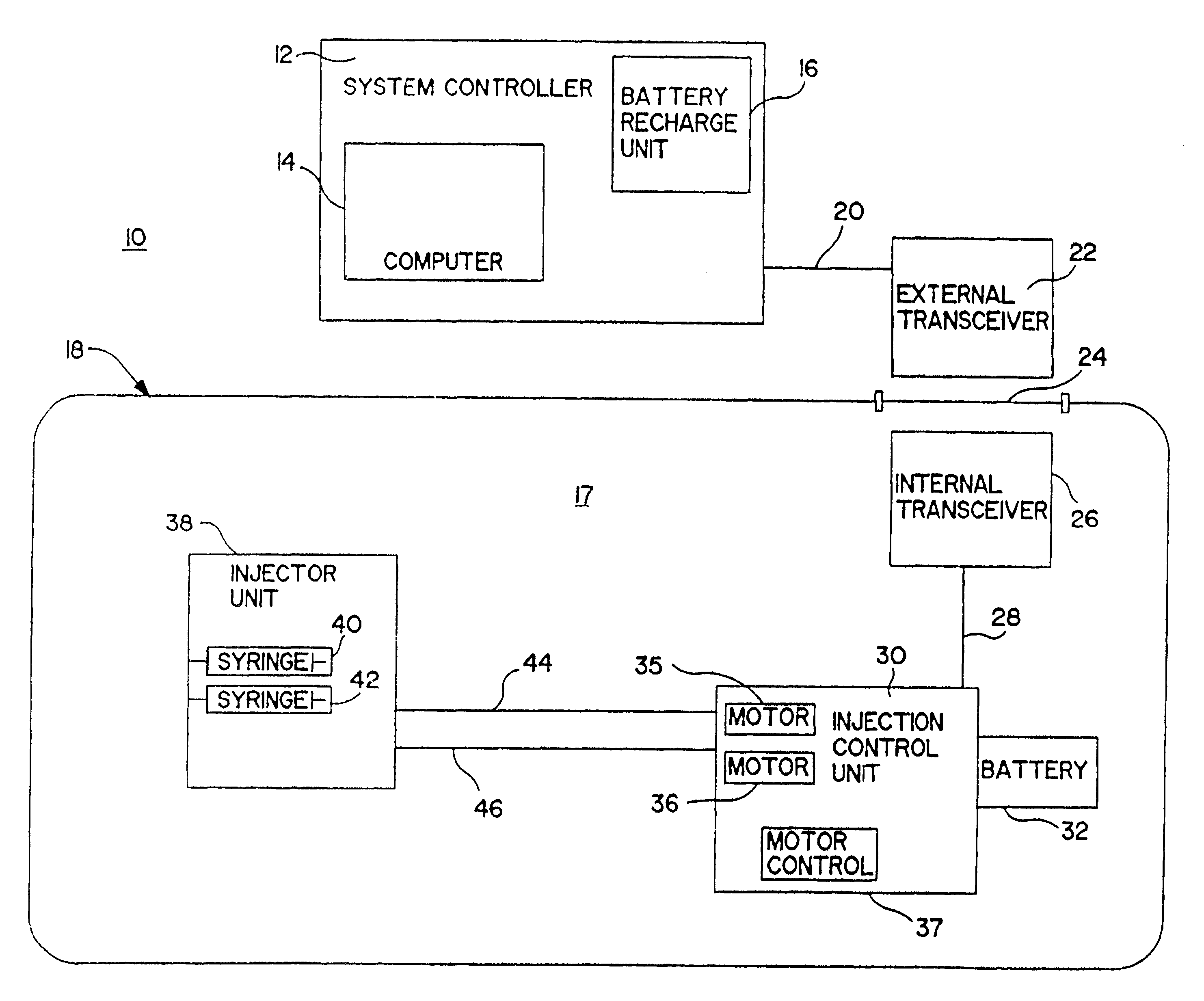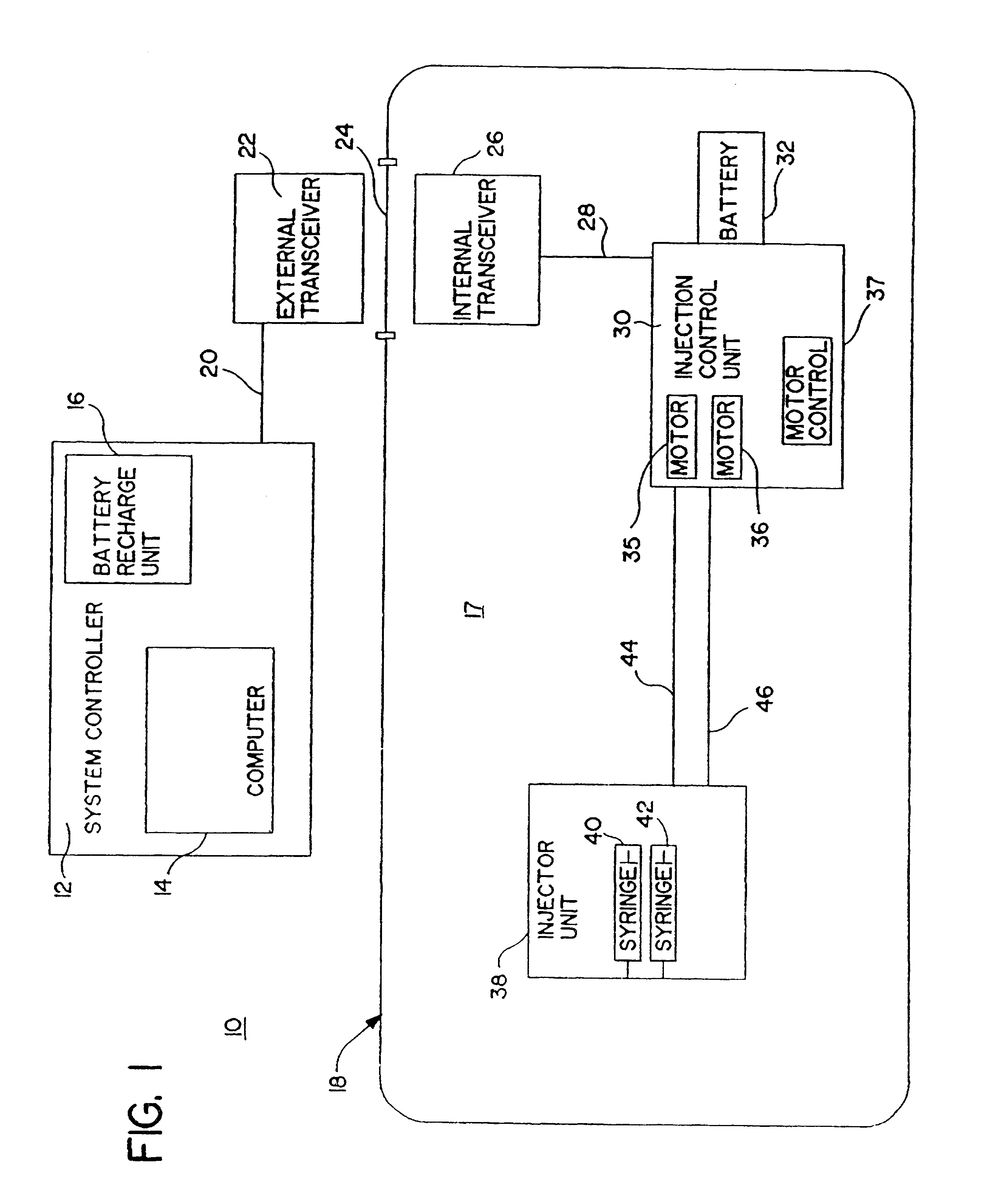Patient infusion system for use with MRI
a patient and infusion system technology, applied in the field of mri systems, can solve the problems of interference between the high-power magnetic field, mri systems which employ these solutions require substantial site dedication and are therefore not very portable, and the alternative has not proven to be optimal
- Summary
- Abstract
- Description
- Claims
- Application Information
AI Technical Summary
Benefits of technology
Problems solved by technology
Method used
Image
Examples
Embodiment Construction
FIG. 1 illustrates an improved magnetic resonance imaging system according to the present invention and is shown generally at 10. The MRI system includes a system controller 12 which incorporates a computer 14 and a battery charging unit 16. The system controller 12 is located externally of the imaging room 17, the imaging room being shielded from electromagnetic interference by a shield 18. Isolation can be achieved by completely enclosing the room with copper sheet material or some other suitable, conductive layer such as wire mesh. Communication line 20, connects the system controller 12 with an external infrared / optical communications transceiver 22. The shielded imaging room 17 also incorporates a patient viewing window 24 in the shield 18 which allows an observer to view the room without breaching the electromagnetic shield 18. The window 24 can be formed by sandwiching a wire mesh material (not shown) between sheets of glass or coating the window with a thin coating of conduc...
PUM
 Login to View More
Login to View More Abstract
Description
Claims
Application Information
 Login to View More
Login to View More - R&D
- Intellectual Property
- Life Sciences
- Materials
- Tech Scout
- Unparalleled Data Quality
- Higher Quality Content
- 60% Fewer Hallucinations
Browse by: Latest US Patents, China's latest patents, Technical Efficacy Thesaurus, Application Domain, Technology Topic, Popular Technical Reports.
© 2025 PatSnap. All rights reserved.Legal|Privacy policy|Modern Slavery Act Transparency Statement|Sitemap|About US| Contact US: help@patsnap.com



